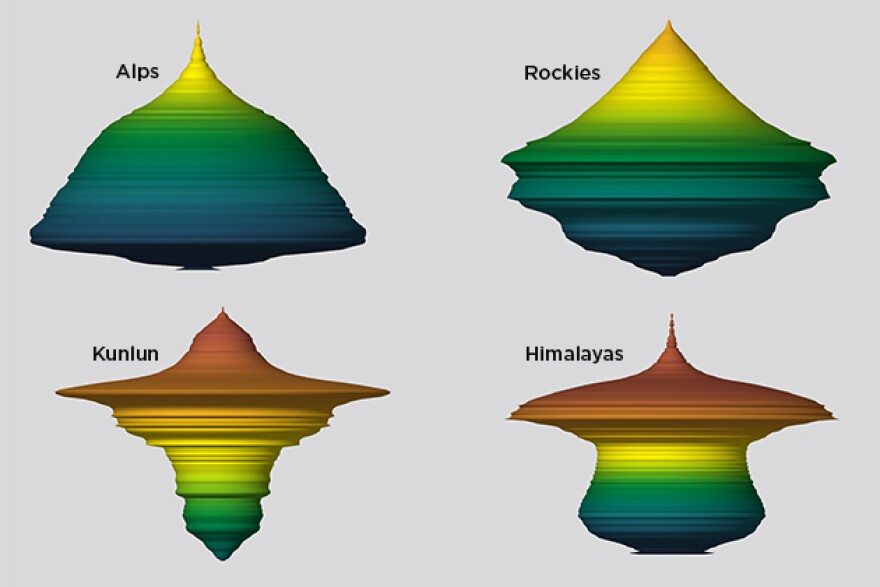As Earth's climate changes, mountain-dwelling animals have typically been viewed as universal losers. Warming temperatures force a species upward, it runs out of habitable space, and it dies off. But new research is complicating that notion, suggesting some mountain animals might actually benefit in the near term from climate change.
In the view of traditional ecology, Morgan Tingley said animals living on mountains would respond to climate change by going up. It's something scientists call the "escalator effect."
"They're climbing up and up and up," said Tingley, who studies ecology and evolutionary biology at UConn. "And they're doing that because the temperature is warming and as you go up mountains, it gets colder."
Tingley said there's a problem with that idea. For one, it's rare for a species to live on a single mountain top. Animals and plants live stretched out over entire ranges, which are filled with all types of peaks, plateaus, and habitable valleys. Sometimes, Tingley said, that actually means more surface area is available to a species at higher elevations.
To prove this, Tingley pulled geographic data on roughly 180 different mountain ranges around the world. He used digital elevation maps to average together all the peaks and valleys in a range like the Himalayas and published his findings in the journal Nature Climate Change.
While you might picture the shape of a mountain as a giant pyramid, what Tingley found was more complex. He learned mountains demonstrate three additional types of shapes: diamond, inverse pyramid, and hourglass.

"About two-thirds of them end up being not pyramid shaped mountains," Tingley said. "Two-thirds of the world's mountains are not the shape that we kind of instinctively think that they are."
In the case of the Himalayas, Tingley and his co-author Paul Elsen found the range was actually an "hourglass shape." It has lots of area in the base and foothills, a tight bottleneck filled with steep slopes in the middle, and expansive open space higher up.
"If you're a species that's right below a bottleneck, then yeah, you're going to actually be squished really, really quickly," Tingley said. "You might be a bigger loser than we might imagine. However, if you're already in that bottleneck and you're about to expand out into this much bigger elevation area, than you might actually adapt to climate change quite well."
Tingley said the message to ecologists is that they need to think about habitat distribution and how mountain species respond to climate change in much more detail.





